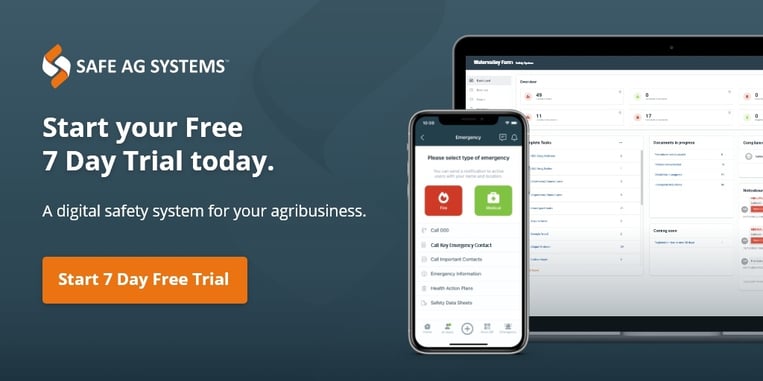No matter what kind of animals you have on your farm, it's important to never let your guard down. Injuries can happen when you least expect it, so always remember that animals can be unpredictable.
Handling animals involves interacting with large animals on farms and in agricultural environments. The temperaments and behaviours of animals differ depending on the species, breed, gender, and time of year. Working with livestock can be physically challenging and requires careful attention to the animals.
Understanding Animal Behaviour
It's crucial to understand animal behaviour to avoid risky situations. Dealing with livestock like cattle, sheep, horses, poultry, and dogs is a common task, but it's not without its risks. It's crucial to practice good health and safety measures to handle the different behaviours of these animals. Every year, numerous injuries related to animals happen, with some leading to fatalities. Remember to prioritise safety when dealing with livestock, especially when working with new workers or family members.
According to WorkSafe Queensland, Animal handling includes:
-
breeding, mating, birthing
-
catching, mustering, herding
-
riding, harnessing, showing
-
dipping, drenching, tagging, branding
-
feeding, collecting byproducts (eggs, honey, etc.), inspections
-
milking
-
shearing, grooming, cleaning
-
slaughtering
-
transporting
-
vaccinating, docking, neutering, dehorning
-
other care
What are the benefits?
Properly managing animals can lead to decreased pain and stress, ultimately benefiting their welfare. It's important for all of us to take care of the animals we're responsible for. Handling animals requires training, skill, and understanding of the behavior of the species you are working with.
Understanding how animals naturally behave, such as recognizing their vision abilities and herd instincts, can help speed up the process of handling animals in groups. Cattle and sheep have a knack for finding their way through obstacles and different types of land, as long as they have enough time, clear visibility, and a sense of direction. By tapping into these inherent skills, we can ensure the safety of moving cattle on our farms and decrease the likelihood of accidents.
What are the risks
Getting stepped on by large animals, getting knocked down, kicked, thrown while riding, or being pinned between the animal and a hard surface are some of the most common injuries.
According to Safe Work Australia, “ Being hit by an animal was the main cause of injury for dairy cattle farming and other livestock farming and falls from a height was the main cause for sheep, beef cattle and grain farming.”
Even though the sheep, beef cattle, and grain farming sub-industry only makes up about a third of the agriculture industry workforce, it accounts for almost two-thirds of worker fatalities and just over 40% of serious claims.
Cattle, pigs, and dairy cows are generally colorblind and have limited depth perception. This heightened sensitivity to contrasts can make them nervous around shadows or sudden light changes. Sheep are also colorblind but possess good depth perception. Horses and Mules commonly kick backward, whereas cows kick forward and to the side. Cows also have a tendency to kick towards a side where they are feeling pain from inflammation or injuries.
What can you do - quick tips
Make sure you have the right equipment and facilities to prevent animal injuries. It's important to have proper tools to handle larger animals safely during maintenance or healthcare procedures. Proper care must be taken when handling animals to reduce the chance of musculoskeletal injuries.
Training and inductions
-
Workers involved in handling and care of animals should receive appropriate induction training and information regarding standard work practices, potential hazards and how to deal with them
-
Yelling should be kept to a minimum
-
Wear appropriate clothing, including protective footwear
Yards and equipment
-
Yards, crushes, cradles, and sheds are appropriate in size and durability for the animals you are dealing with
-
Equipment should be well-maintained and in good conditions
-
Well-positioned access ways, walkways are kept dry and avoid sharp turns when designing yards
Handling of cattle
-
Double-check that there is ample room for the cattle to move freely
-
Use head rails, cradles and crushes to restrain animals
-
Ensure the cows are aware of your presence
Handling of sheep
-
Make sure sheds are well lit and well ventilated
-
Lifting a sheep should be avoided
-
Keep dogs clear of the work area when not being used
Handling of horses
-
Wear suitable protective clothing, including footwear and a helmet
-
Never wind lead ropes or lunge ropes around your hand
Handling of pigs
-
Use nose ropes and crushes to restrain pigs
-
Always keep boars away from each other
-
Don't let small children reach through pens or fences
Utilising low stress methods when handling livestock can have positive impacts on farm productivity. This can lead to better overall health and production of livestock, as well as improved meat quality for customers. Furthermore, it can contribute to a safer work environment.
Topics: Working with Livestock
Disclaimer: Content on this website may be of relevance to users outside of Australia, but content links and examples are specific to Australia. Please check with your local authority for your country and industry requirements.











